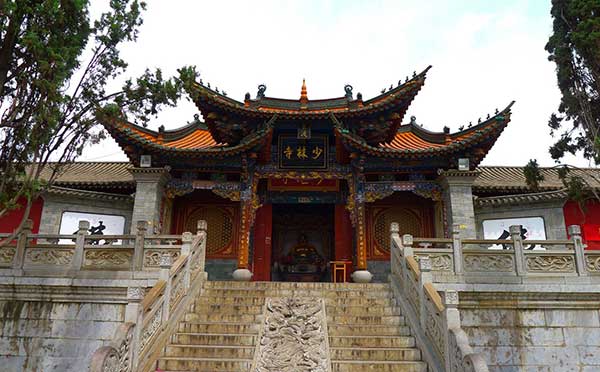
Virtually all of the world’s cultures have defined sacred spaces for religious purposes. Choose one place of worship that you are familiar with (it can be from any faith). What do you think is the relationship between the appearance and layout of the space and its religious uses? Include in your discussion a description of the space’s unique structures and characteristics. Please include a picture, if possible.
One of the most iconic and significant Buddhist sacred spaces in China is the Shaolin Temple, located in Henan Province. The Shaolin Temple is renowned for being the birthplace of Zen Buddhism and the origin of Shaolin Kung Fu (Franklin, n.d.). The relationship between the appearance and layout of the space and its religious uses is deeply intertwined, reflecting the core principles and practices of Buddhism.
The Shaolin Temple is situated in the foothills of Song Mountain, surrounded by lush greenery and serene natural beauty. The temple complex covers an area of approximately 160,000 square meters and is designed to harmonize with the surrounding landscape. The layout of the space is characterized by a combination of open courtyards, pavilions, halls, and pagodas (AJ, 2020).
One of the unique structures within the Shaolin Temple is the Mahavira Hall, also known as the Great Hall of Buddha. This grand hall serves as the main worship space for monks and devotees. It is typically adorned with intricate wood carvings, colorful murals, and statues of various Buddhas and Bodhisattvas (AJ, 2020). The Mahavira Hall is positioned at the center of the complex, symbolizing its importance as the spiritual heart of the temple.
Another prominent structure within the Shaolin Temple is the Pagoda Forest. The Pagoda Forest consists of numerous stone pagodas, each representing a deceased monk. These pagodas vary in size and design, reflecting the status and achievements of the respective monks (Franklin, n.d.). The layout of the Pagoda Forest is meticulously planned, with each pagoda arranged in a specific pattern to create a sense of harmony and order. The Pagoda Forest serves as a reminder of the impermanence of life and the continuous cycle of birth and death.
The appearance of the Shaolin Temple reflects the Buddhist principle of simplicity and non-attachment. The architecture is characterized by clean lines, minimal ornamentation, and a focus on natural materials such as wood and stone. The space is designed to evoke a sense of tranquility and contemplation, providing an environment conducive to meditation and spiritual practice.
In addition to the architectural elements, the layout of the Shaolin Temple also incorporates training areas and martial arts facilities. This reflects the unique blend of Buddhism and martial arts that has made the Shaolin Temple famous worldwide. The presence of these spaces emphasizes the importance of discipline, physical fitness, and self-defense in the practice of Buddhism.
Overall, the appearance and layout of the Shaolin Temple are intricately connected to its religious uses. The serene natural surroundings, the grandeur of the Mahavira Hall, the symbolic arrangement of the Pagoda Forest, and the integration of martial arts facilities all contribute to creating a space that facilitates spiritual growth, self-discipline, and enlightenment. The Shaolin Temple stands as a testament to the profound relationship between architecture, spirituality, and cultural heritage.

References
AJ. (2020, May 22). The Shaolin Temple 100 years later: Photo comparison. Retrieved from https://www.culturalkeys.cn/2020/05/22/the-shaolin-temple-100-years-later/
Franklin, J. (n.d.). Shaolin Temple. Retrieved from https://www.britannica.com/topic/Shaolin-Temple
